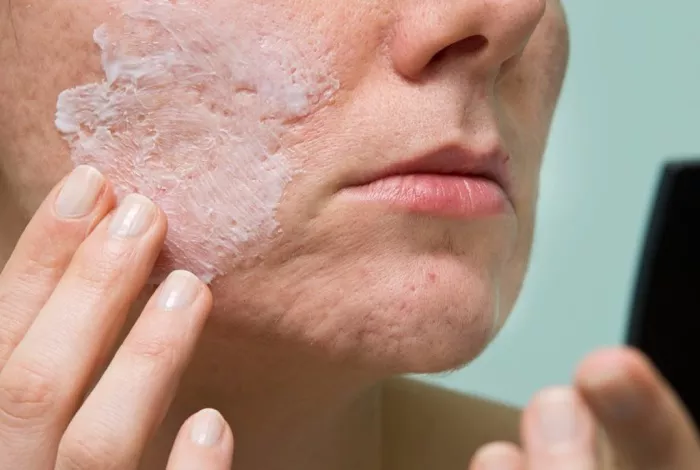Keloids are raised, thickened scars that form as a result of an overgrowth of scar tissue. They can be aesthetically displeasing and cause discomfort or itching. Keloids often require intervention to remove or reduce their size. In this comprehensive guide, we will explore keloid removal procedures and discuss the healing process that follows. Understanding how long it takes for keloid removal wounds to heal is crucial for managing expectations and ensuring proper care throughout the recovery period.
1. Keloid Removal Procedures
Keloid removal procedures aim to reduce the size and appearance of keloids, providing relief from associated symptoms. There are several treatment options available, and the choice of procedure depends on factors such as the size and location of the keloid, the individual’s medical history, and the preferences of the patient and healthcare provider. Here are some commonly used keloid removal procedures:
a. Surgical Excision: Surgical excision involves cutting out the keloid and closing the wound with sutures. This procedure is typically performed under local anesthesia. While surgical excision can effectively remove the keloid, there is a risk of the keloid recurring or becoming larger after the procedure.
b. Cryotherapy: Cryotherapy involves freezing the keloid with liquid nitrogen, causing the keloid tissue to die and slough off. This procedure is relatively quick and can be performed in a dermatologist’s office. Multiple sessions may be required to achieve optimal results.
c. Corticosteroid Injections: Corticosteroid injections involve the direct injection of a corticosteroid medication into the keloid. This treatment helps reduce inflammation and shrink the keloid. Multiple injections may be required over several weeks or months.
d. Silicone Gel or Sheets: Silicone gel or sheets are applied directly to the keloid and exert pressure on the scar, helping flatten and soften it over time. This non-invasive treatment option is often used in conjunction with other procedures.
e. Laser Therapy: Laser therapy utilizes focused light energy to target and break down the excess scar tissue in the keloid. This procedure can help reduce the size and appearance of keloids, but multiple sessions may be necessary for optimal results.
Each keloid removal procedure has its advantages and considerations, and the choice of treatment should be made in consultation with a qualified healthcare professional.
2. The Healing Process after Keloid Removal
After keloid removal, the body initiates a complex healing process to repair the wound and restore normal tissue. Understanding the stages of wound healing can help manage expectations regarding the duration of the healing process. Here are the key stages of wound healing following keloid removal:
a. Inflammatory Stage: Immediately after keloid removal, the body responds with an inflammatory reaction. This stage is characterized by redness, swelling, and pain at the surgical site. Inflammation is a normal part of the healing process and is essential for clearing away debris and initiating tissue repair.
b. Proliferative Stage: During the proliferative stage, new tissue begins to form, and the wound gradually closes. Fibroblasts, specialized cells responsible for producing collagen, migrate to the wound site and lay down a matrix of new tissue. This stage is crucial for rebuilding the damaged tissue and can last several weeks.
c. Maturation Stage: In the maturation stage, the newly formed tissue remodels and matures. Collagen fibers reorganize, becoming stronger and more organized. The scar gradually becomes less visible and softer. This stage can last for several months or even years.
The duration of the healing process after keloid removal can vary depending on factors such as the size and depth of the wound, the individual’s overall health, and the specific keloid removal procedure performed. It’s important to note that complete healing may take several months or longer.
3. Factors Affecting Healing Time
Several factors can influence the healing time after keloid removal. Understanding these factors can help individuals manage their expectations and take appropriate steps to support the healing process. Here are some key factors affecting healing time:
a. Keloid Size and Depth: Larger and deeper keloids may require more extensive surgical excision or treatment, leading to a longer healing time. The size and depth of the keloid can also influence the amount of scar tissue that needs to be remodeled during the healing process.
b. Individual Healing Response: Each individual’s healing response is unique and can vary based on factors such as age, overall health, and genetics. Some individuals may have a faster healing response, while others may take longer to heal.
c. Proper Wound Care: Following proper wound care instructions provided by the healthcare provider is crucial for optimal healing. This includes keeping the wound clean, changing dressings as instructed, and avoiding activities that can disrupt the healing process, such as excessive stretching or tension on the wound site.
d. Overall Health and Lifestyle Factors: Certain lifestyle factors, such as smoking or a compromised immunesystem, can negatively impact the healing process. Smoking, for example, reduces blood flow and oxygen delivery to the tissues, which can slow down wound healing. Maintaining a healthy lifestyle, including a balanced diet, regular exercise, and adequate sleep, can support the body’s natural healing mechanisms.
e. Post-Procedure Complications: In some cases, complications such as infection or poor wound healing can occur after keloid removal procedures. These complications can prolong the healing time and may require additional medical intervention. It is important to promptly report any concerns or unusual symptoms to the healthcare provider.
Considering these factors, it is essential to approach keloid removal with patience and realistic expectations regarding the duration of the healing process.
4. Healing Timeline and Expectations
While the healing time can vary from person to person, it is helpful to understand a general timeline for the healing process after keloid removal. It is important to note that this timeline is approximate, and individual experiences may differ. Here is a general healing timeline:
a. First Week: During the initial week after keloid removal, the focus is on controlling swelling, minimizing pain, and preventing infection. The wound may be covered with a dressing or bandage, and the healthcare provider may provide instructions on how to change the dressing and keep the wound clean. It is normal to experience some discomfort and swelling during this period.
b. First Month: In the weeks following keloid removal, the wound starts to heal. The inflammation gradually subsides, and the wound edges may begin to close. During this period, it is important to follow the healthcare provider’s instructions regarding wound care, including any prescribed medications or dressings.
c. First Three Months: By the end of the third month, the wound should be mostly closed, and the initial scar tissue starts to form. The scar may appear red, raised, and firm at this stage. It is important to continue following proper wound care instructions and avoid activities that can strain or disrupt the healing wound.
d. Three to Six Months: During this period, the scar tissue continues to remodel and mature. The scar may gradually become less visible and softer. It is important to protect the healing scar from excessive sun exposure and use sunscreen when going outdoors.
e. Six Months to One Year: By the six-month mark, the scar should continue to improve in appearance. However, it is important to note that the healing process can take up to a year or longer for the scar to fully mature and reach its final appearance. It is crucial to continue practicing good scar care during this period and consult with the healthcare provider if any concerns arise.
Conclusion
Keloid removal procedures can help improve the appearance and symptoms associated with keloids. Understanding the healing process following keloid removal is essential for managing expectations and ensuring optimal care during the recovery period. While the duration of healing can vary depending on various factors, following proper wound care instructions, maintaining a healthy lifestyle, and promptly addressing any concerns can support the healing process. By being patient and giving the body time to heal, individuals can increase the chances of achieving satisfactory outcomes after keloid removal.
[inline_related_posts title=”You Might Be Interested In” title_align=”left” style=”list” number=”6″ align=”none” ids=”2949,2946,2814″ by=”categories” orderby=”rand” order=”DESC” hide_thumb=”no” thumb_right=”no” views=”no” date=”yes” grid_columns=”2″ post_type=”” tax=””]



































